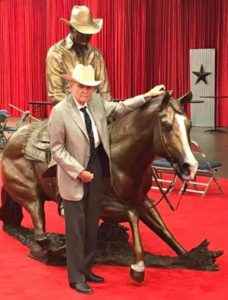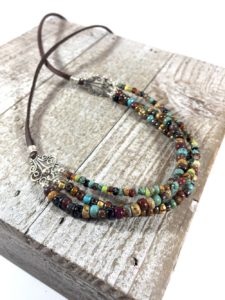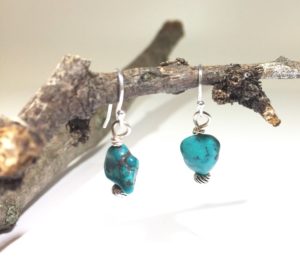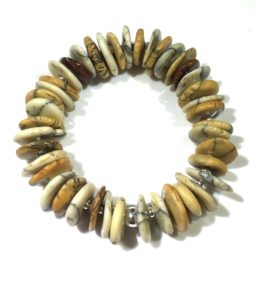Looking through the bridle rack at any trainer’s barn can be both exciting and daunting: so many bits, so many different reasons to use each one. We asked 9.8-million-dollar rider, Austin Shepard to share his insight on the bits he uses and why.
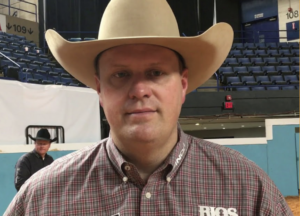 Shepard begins with the basics when making your choice. “The bridle bit you use really translates what you are trying to do to teach the horse, whether it is in the early stages in a hackamore or side-pull to a bigger show bridle. It can help the horse mature or go back and go over some things they learned earlier,” he said.
Shepard begins with the basics when making your choice. “The bridle bit you use really translates what you are trying to do to teach the horse, whether it is in the early stages in a hackamore or side-pull to a bigger show bridle. It can help the horse mature or go back and go over some things they learned earlier,” he said.
Preferring to ride them only in a snaffle in their two-year-old year, Shepard is still prepared to step back into a hackamore as training progresses, if he finds a horse is a bit worried about the snaffle.
Shepard will begin to introduce a correction or something with leverage early in their three-year-old year.
“I like to put on a small short shank correction, with a leather curb and maybe something with a martingale as close as I can get it to a snaffle, but with more stop,” said Shepard.
However he does caution that, “It takes a while for them to really get use to the correction bit, they do not automatically pack it like they do a snaffle.”
When deciding to use a leather or chain curb strap, Shepard said the leather is a lot easier on them. “They definitely need something soft and loose, the tighter it is the more leverage it has. You don’t want to go from a regular snaffle into a dog chain and curb,” he explained.
As a horse becomes a three-year-old, Shepard might move into a correction with a longer shank adding a bit more leverage. Although he like to keep a horse in a correction for a while, he likes to show a horse in a solid elephant bit.
“Some horses I might keep in a correction or something like a Buster Welsh bit that swivels but it depends on the horse. If a horse gets a bit stiff in a straight bridle, I might go back to something that has a solid mouthpiece that has a swivel shanks on the side and still get a little left and right, but the mouthpiece simulates a show bridle,” he said.
Although the solid show bits can have an intimidating look to them, Shepard shed light on the biggest misconception about them.
“Putting a bigger bridle on a horse, people put it on with the attitude they are going to get a horse to back off of it, more than they are going to put them into the bridle. A lot of people go to a bigger bridle to get into a horse for something. You can also scare a horse in a twisted wire, it is all about how you use it,” said Shepard.
“By putting a bigger bridle on a horse, it allows me to have softer hands, to where I am not getting in the horse’s way when they are working a cow. I can stop a horse real quick if I use my hands and my feet right,” he explained.
Figuring out which bridle a horse feels comfortable in can be difficult but it is paramount when cutting cows.
“Once you put your hand down the bridle is really immaterial, you need to be able to go cut your cows in it. If a horse handles well and is comfortable in it, they respect it but are not afraid of it.”
Shepard tends to favor bits with a bit of weight to them but does not like the bars to be too thick and heavy.
“The thinner the bar, the sharper they are, but a lot of the feel comes from the angle on the mouthpiece.” When looking at the mouthpiece he explained, “The 90-degree angle can be sharp and quicker. It’s right there on their tongue and is quicker than a mouthpiece that is rounded.”
Brain chains and tie-downs: what are they and when to use them?
A brain chain is a tie down that has a poll strap and is designed to help teach a horse to keep its head down. Shepard said,
“A brain chain is good for a horse that kind of wants to argue with you and wants to get their head up and doesn’t want to get broke in the face. It allows you to work a horse with your hands lower and not have to do near as much to make them come back to you when you are working a cow. Like anything, it can get over used.”
“I have noticed that the horses that you work in a tie-down too much, kind of get their feet out in front of their face, they rely on bracing against the tie-down and it doesn’t let them draw their front feet under them like they have to to turn around,” he explained.
“I don’t want one too loose, I don’t want their head to go above the saddle horn.”
The key, Shepard said, is to be consistent with the bit or tack you choose.
“Whatever you use on the horse, be it a bigger bridle, a smaller bridle, tie-down, brain chain, martingale or whatever, you have to use it enough so it makes sense to the horse.” Shepard said.
“You don’t want to confuse them. It has to be something you can use to work a horse on a cow and the horse doesn’t argue with you and the horse does what you want them to do without thinking about you.”
Once he finds the show bridle that his horse is comfortable in and works well with, Shepard will work them in that show bridle for a day or two before he leaves home to get them mentally prepared.
“I believe when you put a show bridle on at home they know the difference, they get more serious. I like to put a show bridle on a horse and then lope them some more before you go show them because when you put it on them, it is just part of game time thing to them.”
“I have seen some horses where you put that show bridle on them and they perk up so they need to go warm back up a bit with it on. I don’t like to just stick it on and walk to the herd,” Shepard said.
The bottom line is, the horse tells you what it likes verses you telling the horse what he should like.

 A well-run barn is the key to any smooth operation. Whether you have one or 50 horses in your care, it’s crucial that you have an organized space, know where everything is and are able to act in any kind of emergency.
A well-run barn is the key to any smooth operation. Whether you have one or 50 horses in your care, it’s crucial that you have an organized space, know where everything is and are able to act in any kind of emergency.